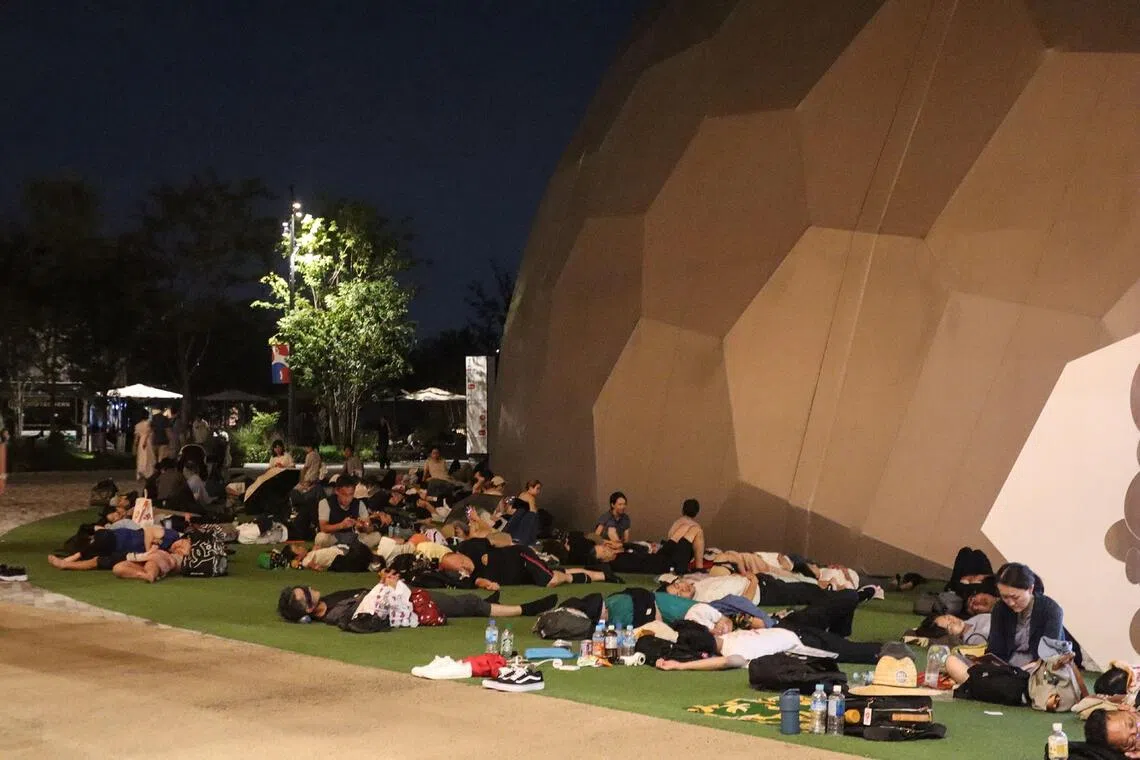Japan wraps up unexpectedly successful World Expo
Sign up now: Get insights on Asia's fast-moving developments

Visitors after a power outage abruptly shut down the Osaka Metro line linking the city to the 2025 World Expo site, on Aug 14.
PHOTO: AFP
Follow topic:
TOKYO - Japan brought down the curtain on Oct 13 on the six-month World Expo, having surmounted initially tepid public enthusiasm, contaminated fountains and swarms of pesky flies to welcome more than 27 million visitors.
The 2025 expo’s star attraction, the Grand Ring – the world’s largest wooden structure, surrounding all the country pavilions – has proven such a hit that a high school student has even launched a petition to save it.
Currently, the plan is for a 200m section of the ring, the work of renowned Japanese architect Sou Fujimoto, to be preserved on an artificial island in host city Osaka.
But the nearly 7,000 petitioners say they want it saved in its entirety.
“At the moment I stepped onto the ring, something inside me changed,” wrote the Osaka school student who started the campaign on an online petition site.
“Standing beneath the 20m-high wooden roof, I felt the warmth of the wood seep through my entire body, filling me with an indescribable emotion.”
Japan had feared scant media and public interest would make the expo a flop.
But organisers say the event – which involved around 160 countries and regions showcasing their technology, culture and food – will likely turn a profit of at least 23 billion yen (S$196 million), thanks in part to strong ticket sales.
The highlights included a Mars meteorite, a beating artificial heart grown from stem cells, and Hello Kitty figures in the form of algae.
It was a heartening turnaround for the initially embattled exhibition, which is held in a new city every five years.
The Osaka event faced complaints that clouds of midges were swarming the venue and that its Water Plaza had been contaminated with legionella bacteria.
And at the height of Japan’s sweltering summer, a sudden suspension of the sole train to the venue left more than 30,000 visitors stranded, with some forced to sweat through the night near the station and over 30 people taken to hospitals.
Mr Jacques Maire, head of the French pavilion, told AFP that the expo had also been “extremely challenging” for other countries involved.
In comparison to past events, this expo has been “the most expensive, the most complex”, although he summarised the event as “magnificent”.
The first “World’s Fair” to celebrate culture and industrial progress was held in London in 1851, with the Eiffel Tower built for the 1889 edition in Paris.
The event was later renamed World Expo, and the next one will be held in 2030 and 2031 in Riyadh, Saudi Arabia. AFP

